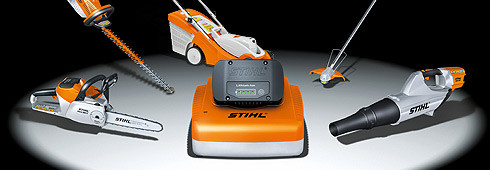Why The Future Of OPE Might Not Just Be Battery-Powered
by Black Ink Team

Battery-powered outdoor power equipment is growing in popularity for its easy maintenance, clean functioning, noise reduction, and due to other factors, but it is our contention that there will still be a place for gas-powered outdoor power equipment for a long time to come. Furthermore, it is arguable that the two inhabit separate product categories. Here are a few of the reasons why.
On a power-output basis, battery-powered is yet to catch up to gas-powered outdoor power equipment. But as batteries and electric motors improve that gap will shrink exponentially. So, in today’s world, a landscaping company or a forestry company might want to hold on to gas-powered outdoor power equipment, or at least have a few pieces on standby, for jobs where they’ll need to pack some extra punch. If you are up against a tree with remarkably thick limbs, for example, you might damage your battery-powered equipment or not be able to cut through them at all. This means that only the most powerful examples of gas-powered outdoor power equipment may stand the test of time, because they are the only ones that will need to be used, but some of the reasons below suggest that there will still be a place for all tiers of gas-powered outdoor power equipment.

Sometimes forestry professionals must trek far and wide. They may be looking for a specific species of tree, or they may be looking for a tree that’s a certain age. The problem with battery-powered machinery is that, overtime, the power from their batteries depletes whether or not you are using it. You can buy all sorts of generators to recharge batteries while you’re out in the field, but after travelling a far distance to get somewhere I doubt you would want to have to wait around in order for your machine to be able to run. Thankfully, with gas-powered outdoor power equipment one must simply fill them with fuel. This feature may also make some landscapers want to keep running their businesses on gas, rather than on batteries, because they are more used to the rhythm of ‘filling’ than the rhythm ‘charging’ (when they leave for a couple days, they won’t ever have to check that their equipment is charging, they will just have to lock it away.) With gas-powered equipment, there are lot more moving parts and maintenance is tougher, but at least unlike with battery-powered outdoor power equipment you don’t have to wait to start and get going.
Another reason why professionals who use outdoor power equipment may never make the switch to battery-powered outdoor power equipment is because they have some deal in place where they can buy fuel cheaply. Alternately, they may have stockpiled fuel in the past and still want to get their money’s worth before switching. Many landscaping and forestry professionals enter into agreements with fuel companies which subsidize their running costs and lower their bottom line.
Battery-powered outdoor power equipment has definite advantages for some applications, but it will probably never be as easy to pack it up, leave it for a couple of days or more, then start using it. Furthermore, gas-powered is likely to be the more powerful option overall for years to come. Fossil-fuel technology may still be able to compete with space-age technology.
